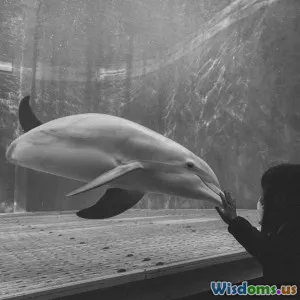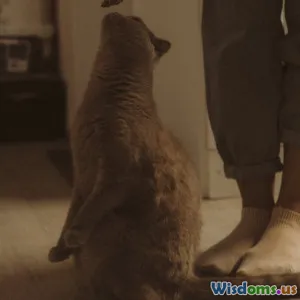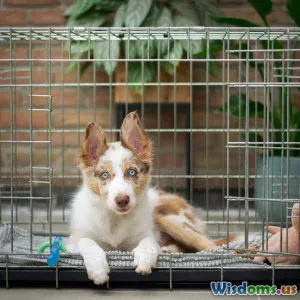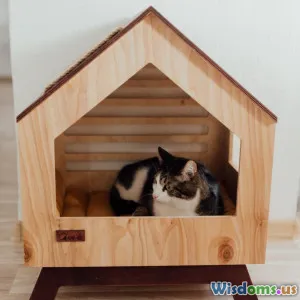
Playtime: Understanding Its Importance for Pets
9 min read Explore the profound significance of playtime for pets, delving into its benefits and techniques for an enriched pet life. (0 Reviews)
Playtime: Understanding Its Importance for Pets
When it comes to the well-being of our pets, we often prioritize food, shelter, grooming, and medical check-ups. However, an equally critical aspect that sometimes gets overlooked is playtime. Pets, be it dogs, cats, birds, or even rabbits, thrive on play. It’s an integral part of their lives as it aids in physical health and fosters mental stimulation. This article dives deep into the importance of playtime for pets, its many benefits, and practical ways to incorporate it into their routines.
The Role of Play in Pet Development
Play serves various purposes in the development of pets, akin to how it benefits human children.
Socialization Skills
For many animals, especially during their formative stages, playtime is a way of learning important social skills. Puppies that engage in play with littermates learn signals primarily used for communication. These signals help to prevent aggression and encourage proper behavior later in life. According to the American Kennel Club, “socialized puppies are less likely to exhibit behavioral problems in adulthood.”
Physical Exercise
Physical benefits of playtime are vast, covering a range of health outcomes that can prevent obesity and lethargy. Dogs robustly benefitting from regular play sessions face lesser health issues linked with inactivity. A daily activity, like a game of fetch, can ensure your dog meets the 30-60 minutes of exercise each day recommended by veterinarians.
Just like dogs, cats also benefit from interactive play. In the wild, they’d typically spend their day hunting for food. Indoor cats can emulate a similar experience through engaging play with toys that mimic their natural prey. For instance, feather wands and laser pointers keep your feline friends active and healthy, maintaining their predatory instincts.
Mental Stimulation
Play encourages an active mind. It breaks the monotony of daily life for pets by sparking their curiosity. Toys that involve puzzle-like tasks compel pets to think critically, stimulating their minds.
A study published in the journal Animal Cognition revealed that engaging a pet’s brain through play can significantly reduce boredom, which is often a precursor to destructive behaviors. Moreover, mental stimulation via play contributes positively to a pet’s overall emotional health.
Benefits of Playtime for Pets
The advantages of playtime propagate beyond mere enjoyment.
Reduces Behavioral Issues
Structured playtime offers pets a productive way to expunge energy. A dog lacking sufficient play might channel their excessive energy into undesirable behaviors such as chewing, excessive barking, or digging. A simple game can reshape their behavior considerably.
For cats, aspects like aggressive behavior or persistent meowing could arise from boredom or an unfulfilled need for activity. Moreover, charity organizations and shelters find that pets involved in regular play sessions are often more emotionally balanced and conducive to rehoming.
Enhances Bonding
Playtime is a perfect opportunity to strengthen the bond between a pet and its owner. Engaging with your pet in activities—they enjoy allows for shared experiences developing mutual trust and affection. According to Dr. John Bradshaw, author of Cat Sense, play between pets and their owners creates emotional connection while enhancing respect and understanding.
Injury Prevention
Engagement in regular play helps develop strength and flexibility, contributing to injury prevention. For athletic dogs, conditioning through play not only leads to enhanced skill but also better balance and coordination. Proper play ensures your pet maintains muscle tone, staves off age-related degeneration and supports overall mobility as they advance in years.
Creative Play Ideas for Various Pets
Getting creative with play can lead to more stimulating and enriching experiences for your pet. Here are some tailored suggestions:
Dogs
- Agility Training: Create an obstacle course using items like chairs for jumping or tables to crawl under.
- Fetch with a Twist: Use varied types of balls or frisbees to keep things exciting. Consider safety by ensuring the environment is suitable.
- Hide and Seek: Hide treats around the house for your dog to find. This enhances their scent-tracking skills while providing fun exercise.
Cats
- Puzzle Feeders: Toys that require solving a problem to retrieve food promote mental alertness while sprinkled throughout their ordinary mealtime can make eating a game.
- DIY Toys: Use household items such as empty toilet paper rolls stuffed with treats or string tied to a stick.
- Interactive Playdates: If your cat is sociable, invite a friendly pet over for a playdate to foster interactive play.
Birds
- Foraging Activities: Create challenging scenarios mimicking wild environments, providing access to seeds hidden in toys or food puzzles.
- Flight Time Freedom: Open up playtime for free flight; it’s beneficial for their physical health.
- Mimicking Games: Encourage your pet to mimic sounds to keep them engaged in vocal play.
Small Mammals
- Exercise Wheels: Invest in a sturdy, properly sized wheel to allow your pet to run. Additionally, hide treats in their habitat to promote exploration and interaction.
- Tunnel Time: Construct tunnels out of cardboard for pets to run through, promoting activity and curiosity.
- Surface Variety: Design their environment with various textures (grass, sand, cloth) to stimulate exploration.
Time Allocation and Play Duration
It’s vital to understand that the frequency and duration of playtime should be adjusted based on a pet’s age, size, and energy levels. Overall guidelines suggest:
- Dogs: 30-60 minutes daily, depending on size and breed.
- Cats: Interactions that total 30 minutes daily, with occasional intensive bursts of play.
- Birds: At least 2-3 hours of playtime per day, involving out-of-cage interaction with owners while enabling a choice of toys access.
- Small mammals: Regular 1-2 hours of exploration time outside their habitat, ideally engaging in bonding play with their humans for aiding fearlessness.
Conclusion
Playtime transcends being mere fun for pets; it’s pivotal for their health, happiness, and social learning. Embracing structured play will contribute significantly to behavior correction, emotional health, and vitality. By recognizing its importance and incorporating various exciting activities suited for your pet’s specific needs, you can establish a happier, healthier, and more rewarding bond with your furry companions. Overall, never underestimate the profound impact a simple session of play can have—not only on your pet's life, but also on your relationship and shared experiences. So, reach for that ball, feather wand, or cozy blanket, and let the play begin!
Rate the Post
User Reviews
Popular Posts





















